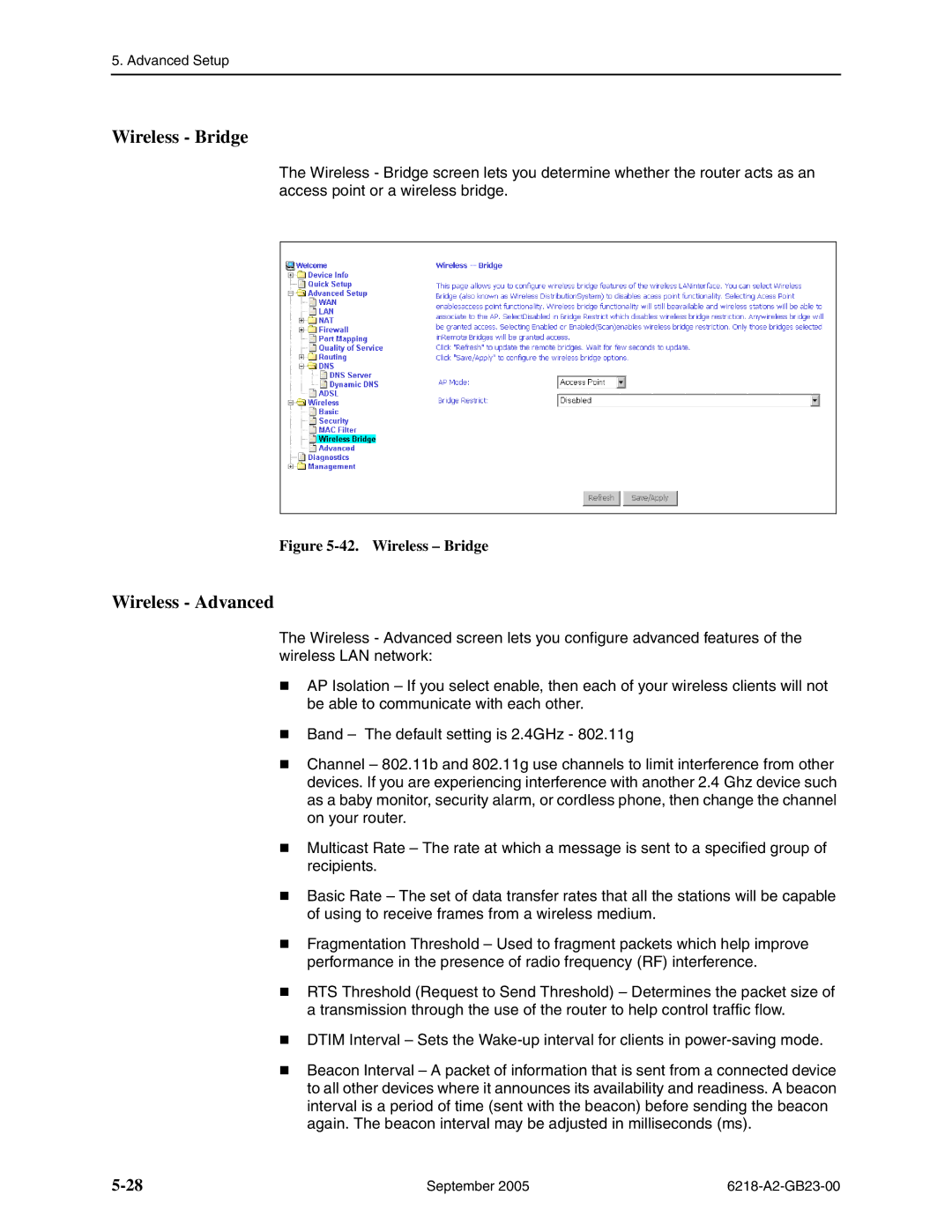
5. Advanced Setup
Wireless - Bridge
The Wireless - Bridge screen lets you determine whether the router acts as an access point or a wireless bridge.
Figure 5-42. Wireless – Bridge
Wireless - Advanced
The Wireless - Advanced screen lets you configure advanced features of the wireless LAN network:
AP Isolation – If you select enable, then each of your wireless clients will not be able to communicate with each other.
Band – The default setting is 2.4GHz - 802.11g
Channel – 802.11b and 802.11g use channels to limit interference from other devices. If you are experiencing interference with another 2.4 Ghz device such as a baby monitor, security alarm, or cordless phone, then change the channel on your router.
Multicast Rate – The rate at which a message is sent to a specified group of recipients.
Basic Rate – The set of data transfer rates that all the stations will be capable of using to receive frames from a wireless medium.
Fragmentation Threshold – Used to fragment packets which help improve performance in the presence of radio frequency (RF) interference.
RTS Threshold (Request to Send Threshold) – Determines the packet size of a transmission through the use of the router to help control traffic flow.
DTIM Interval – Sets the
Beacon Interval – A packet of information that is sent from a connected device to all other devices where it announces its availability and readiness. A beacon interval is a period of time (sent with the beacon) before sending the beacon again. The beacon interval may be adjusted in milliseconds (ms).
